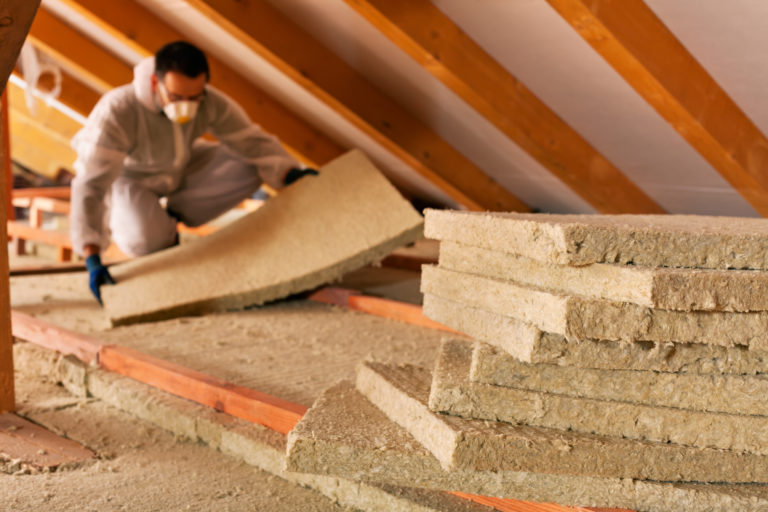Your roofing and gutters go hand-in-hand when protecting your home. When properly angled, precipitation that falls on the roof slides into the gutters. In turn, they drain the water through downspouts to prevent damage to the roof and foundation.
Your roof does other things as well. The most important is protecting your home from extreme heat and cold. It does this through roofing insulation.
The Power of Insulation
Insulation is a must for any home. If applied correctly, it keeps your house warm in the winter and cool in the summer. In addition, insulation helps reduce your energy costs since your HVAC unit doesn’t always need to be running at maximum capacity.
You’ll find insulation in the walls of your home. Well, technically, you won’t know it’s there unless you tear a hole in the drywall. You may also find it in ceiling areas. However, the most important place insulation is required is the roof.
It Starts at the Top
Whether an attic or crawl space, insulation must be rolled out or sprayed near the roof’s rafters. The simple reason is heating and cooling issues start at the top of the home. On warm days, the roof area will be 10 to 20 degrees hotter. Without insulation, that heat is felt in the rooms closest to the roof line.
The same can be said during cold snaps. Without insulation, the rafters will rapidly cool down. If the area isn’t properly ventilated through a combination a good soffit and fascia, then moisture could start to freeze. This leads to chilly rooms that don’t feel warm no matter how high the heat is turned up. If you are experiencing icicles or ice damning, this is being caused from excessive heat loss from the roof. Make sure that your eaves are vented and insulated correctly.
Insulation’s Other Advantages
In addition to keeping your home comfortable, roof insulation has other advantages. For instance, since the heater or air conditioner won’t be maxed out with proper insulation, you can reduce your home’s carbon footprint and help reduce energy bills.
For people with allergies, their symptoms might be minimized if you apply mold-resistant insulation. Furthermore, the proper layer of the product at the roofline could increase the fire rating of your home.
Insulation and Gutters
Another important thing insulation does is keep the roof deck at a constant temperature. Correspondingly, this lessens the roof deck’s contraction and expansion during climate shifts. And this is a big factor when it comes to your gutters.
When gutters are attached near a roof’s shingles, contraction and expansion of the deck can put a strain on the hangers. Under those circumstances, the hardware that secures the hangers can be loosened over time. If that occurs, you won’t know the results until the gutters pull themselves away from the home. This may happen on a gusty day or a time of heavy precipitation.
Insulating Your Roof
In reality, insulating your roof is one of the less expensive tasks that helps protect your home. Depending on what needs to be covered, it can be performed by a professional or on your own. Although, if the area is a crawlspace instead of an attic, a professional team is recommended.
If you want to do this on your own, here are some steps to take.
- Measure your space and, if already there, the amount of existing insulation. If your rooms are too hot or cold, the current levels may be too low or the insulation too old.
- Speak to someone at a home supply store or use an online calculator to determine the depth of insulation that is needed for maximum protection.
- Determine if you want rolled or blown-in insulation. Today, the blown-in product, either fiberglass or cellulose, is used more frequently.
- Wear protective gear, especially if using fiberglass insulation. Long sleeved shirts, long pants, gloves, and a face mask should be mandatory.
- Try to install the insulation when it isn’t too hot or cold. The early morning or evening is the best time.
- Once insulation is applied, check your gutters and tighten any loose attachments that may have been the result of deck expansion or contraction.
Overall, take your time. It may take a few days for the insulation to start regulating the temperatures around your home. If you feel there’s no change, reach out to a professional on this.
Did you know the K-Guard Leaf Free Gutter System doesn’t attach to the roof. Instead, it mounts directly to the fascia board for maximum stability and protection, guaranteed to never pull away from your home or ever need cleaning.
Contact us for a free estimate in Kansas, Missouri, and across the country. We’ll get you ready for the weather extremes.




